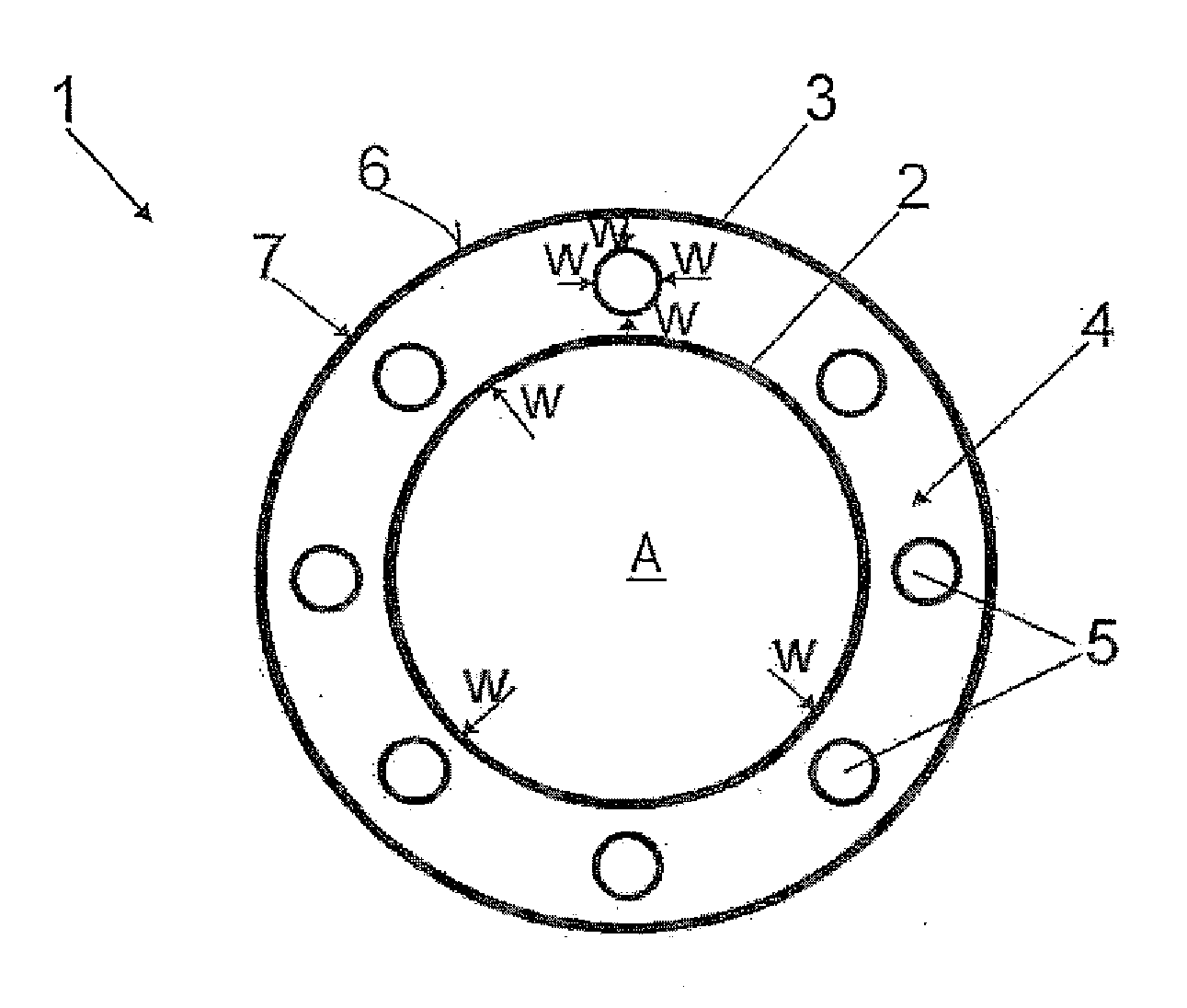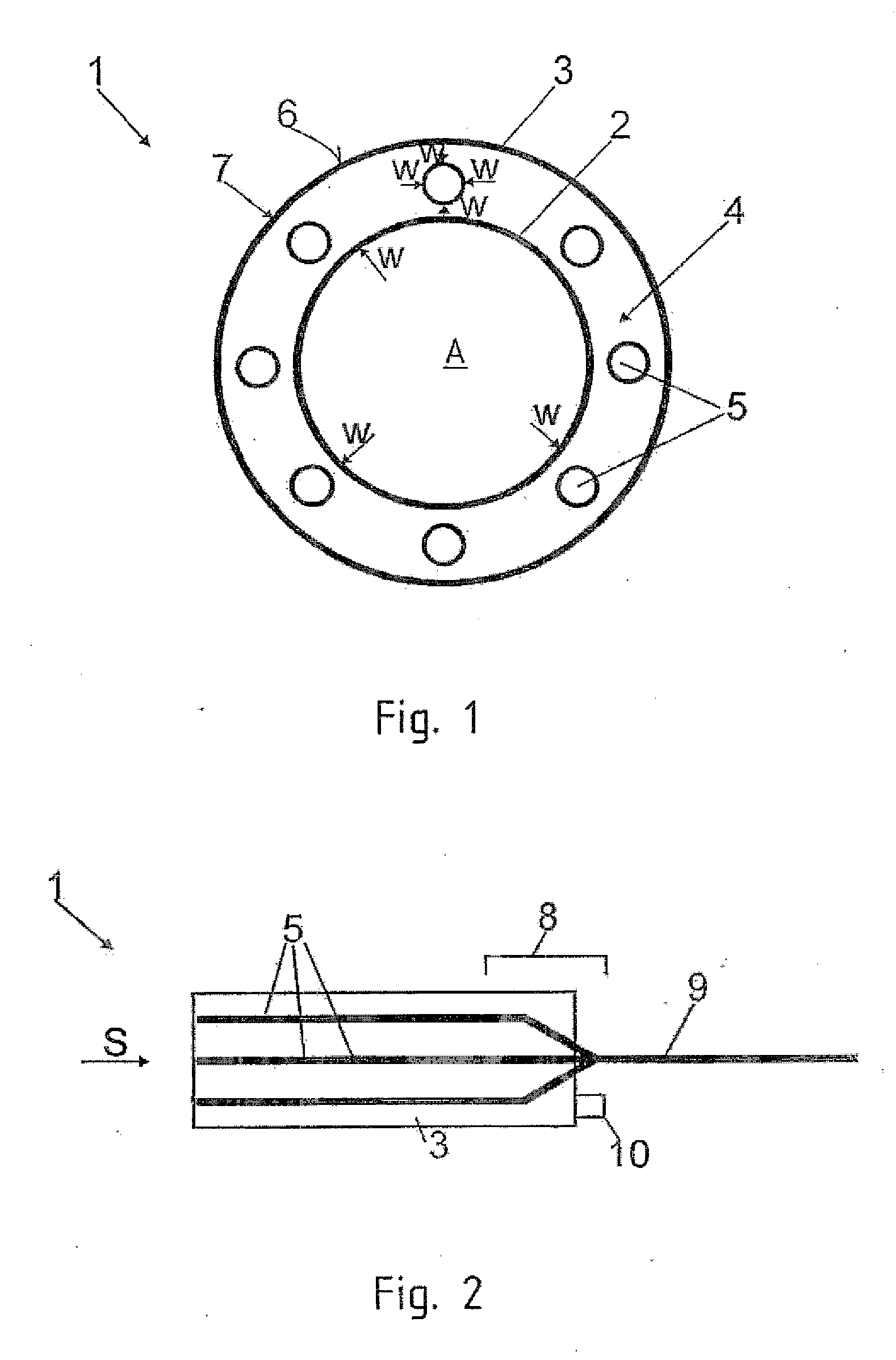Exhaust system with heat accumulator
a technology of exhaust system and heat accumulator, which is applied in the direction of heat storage plant, lighting and heating apparatus, and station tubular conduit assembly, etc. it can solve the problems of limiting consuming fuel for operation, and reducing the efficiency of combustion engine for converting energy contained in fuel into mechanical energy, so as to minimize the dissipation of heat to the ambient air and minimize the effect of heat quantity
- Summary
- Abstract
- Description
- Claims
- Application Information
AI Technical Summary
Benefits of technology
Problems solved by technology
Method used
Image
Examples
Embodiment Construction
[0029]Throughout all the figures, same or corresponding elements may generally be indicated by same reference numerals. These depicted embodiments are to be understood as illustrative of the invention and not as limiting in any way. It should also be understood that the figures are not necessarily to scale and that the embodiments are sometimes illustrated by graphic symbols, phantom lines, diagrammatic representations and fragmentary views. In certain instances, details which are not necessary for an understanding of the present invention or which render other details difficult to perceive may have been omitted.
[0030]Turning now to the drawing, and in particular to FIG. 1, there is shown an exhaust system according to the present invention, generally designated by reference numeral 1. The exhaust system 1 includes an internal exhaust pipe 2 and a heat accumulator housing 3 in surrounding relationship to the exhaust pipe 2. Exhaust gas A flows in the exhaust pipe 2 and carries off h...
PUM
 Login to View More
Login to View More Abstract
Description
Claims
Application Information
 Login to View More
Login to View More - R&D
- Intellectual Property
- Life Sciences
- Materials
- Tech Scout
- Unparalleled Data Quality
- Higher Quality Content
- 60% Fewer Hallucinations
Browse by: Latest US Patents, China's latest patents, Technical Efficacy Thesaurus, Application Domain, Technology Topic, Popular Technical Reports.
© 2025 PatSnap. All rights reserved.Legal|Privacy policy|Modern Slavery Act Transparency Statement|Sitemap|About US| Contact US: help@patsnap.com


